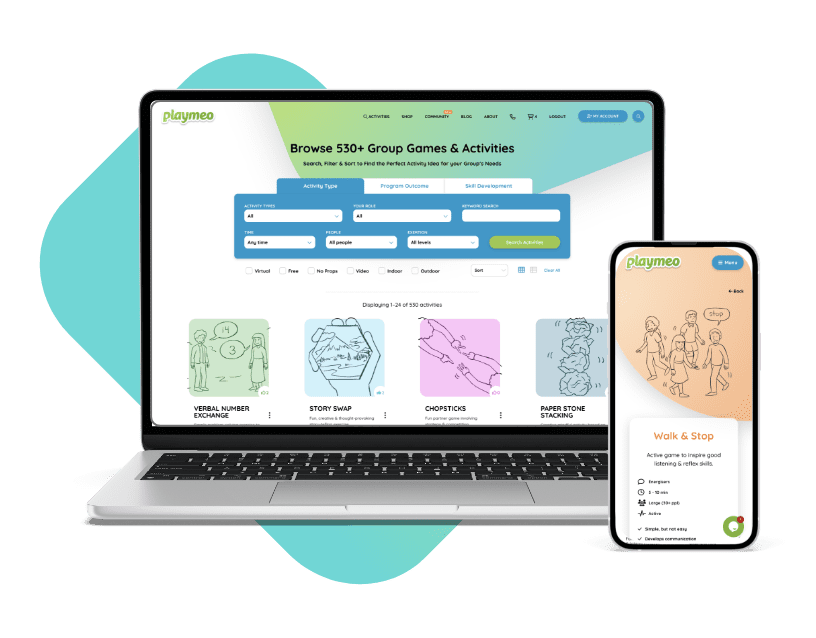Download our free 28-page ebook jam-packed with outrageously fun activity ideas.
How To Adjust Group Activities for Success
This week’s Facilitator Tips episode shares several simple strategies for adapting group activities for smaller or larger audiences, particular to your needs.
<< Go to Episode 35 Go to Episode 37 >>
How often have you discovered or experienced a great game or group activity, only to wonder how to adapt it for your particular audience?
There are some obvious variations and some not-so-obvious variations.
Click the play button above to learn at least four different techniques to adapt group activities for your particular group’s needs.
Want to join the conversation?
Please leave a comment at the bottom of the page (you must be logged in.)
Don’t have a playmeo account? Join today.
Useful Links & Resources
- GRABBSS – a simple model to help you make good decisions about what to look for when you want or need to adapt group activities.
…EE
Video Transcript
Hi there and welcome to Episode 36 of the Facilitator Tips video series.
My name is Mark Collard, I’m an experiential trainer and author, and today I want to focus on how do you adapt for small group activities.
Now I’ve been in the field for about 30 years and I’m sure this is your experience as well, but often I get asked questions like that was great but will it work with a small group, or alternatively I’ve got a really large group, how do I adapt that activity to work in small groups.
So here’s a few of the tips that I have found that have been useful.
First of all, it’s the very obvious, is multiple groups. So if you’ve got 100 people but you know an activity that works really well with say 15, then break them up into 6 groups. And you could introduce the activity to one group and then have all six groups work with it.
So that’s a pretty standard answer but here’s the other one, pairs. They don’t come much smaller than that. And there are no shortage of activities that involve only two or three people. Indeed check out the activity database on playmeo to give you lots and lots of options.
But that can be a great way because it doesn’t matter how many people you’ve got. If you’ve got 1000 people, you’ve only got 20 people, you can end up doing a lot of stuff in small groups of two people.
Then there’s the observers. Maybe you’ve got this great activity but it only needs 15 people but you’ve got 30. Then invite 15 people to do the activity while you ask the rest of the group whatever their number might be to observe at the process. You might even guide them around the sorts of things that they could actually be focusing on to provide feedback at the end of the exercise.
Even what’s more powerful is then invite the observers to do the activity and those that did it first to observe and compare notes. So you would think that they would actually be more successful the second time around, but that’s not always the case.
And then finally not that you need to kiss them, this is keeping it simple. Keep It Simple Stupid.
I’m not calling you stupid, but my point here is don’t go to too much effort. There are many, many activities that are just ideal for small groups, and with just a little tweak here and there, often just with the rules or maybe dividing up into groups or pairs, can be a great way to involve a large group as well.
And that’s it for this episode. If you’ve got a comment, maybe you’ve got some strategies you would like to share as well, we would love to hear from you. Indeed leave a comment or in fact, share this with other people.
We have many many other episodes in our series, so if you’re new to the Facilitator Tips video series, check out all of the other episodes, and we have many more ahead of us as well.
Until then, I look forward to seeing you. Bye-bye.







There are currently no comments